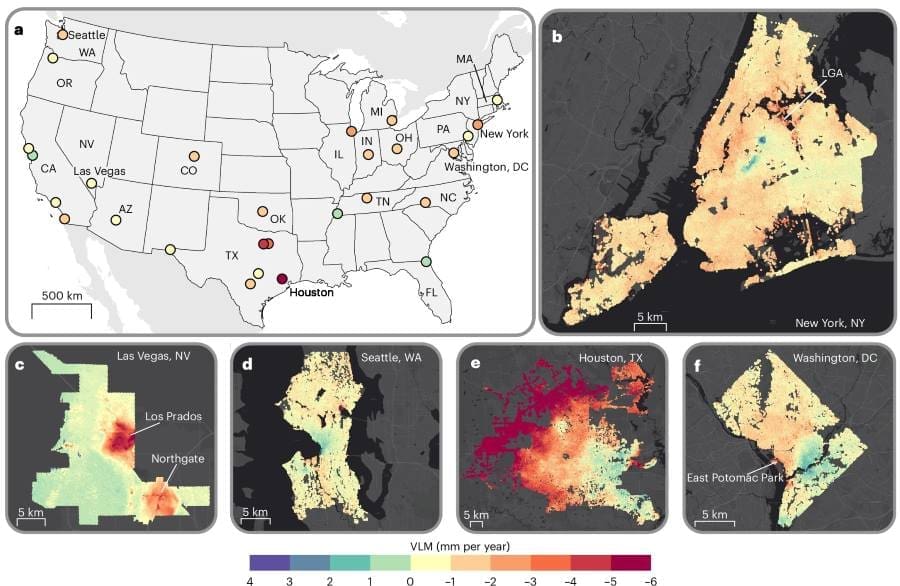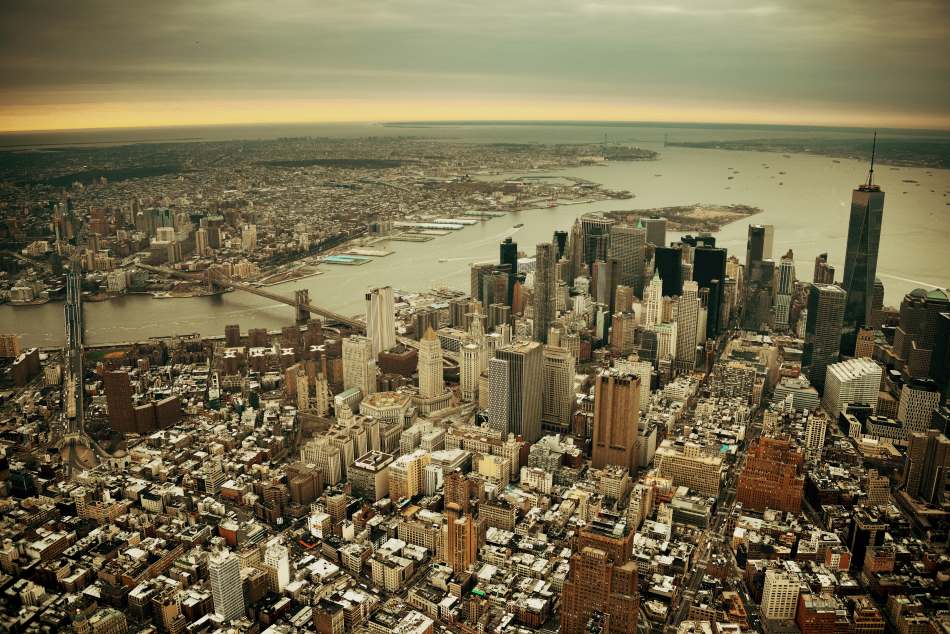Summary:
Large parts of urban America are slowly sinking – and not just along the coasts. A new study published in Nature Cities reveals that land subsidence is affecting all of the 28 most populous U.S. cities, with at least 20 percent of each city’s urban area experiencing downward shifts. The research, led by scientists at Virginia Tech, used satellite-based radar from 2015 to 2021 to map subsidence rates at high resolution, uncovering subtle but widespread changes caused primarily by groundwater extraction. In cities like New York, Chicago, and Seattle, the land is subsiding by about 2 millimeters per year, while parts of Houston and other Texas cities are sinking as much as 10 millimeters annually.
These gradual shifts in the ground surface may seem negligible, but they pose significant risks. “A lot of small changes will build up over time, magnifying weak spots within urban systems and heighten flood risks,” said lead author Leonard Ohenhen. Over 29,000 buildings are now located in areas classified as high or very high risk for damage due to subsidence. As urban populations grow and demand for groundwater rises, the study urges cities to adopt targeted mitigation strategies, from groundwater management to better infrastructure planning.

Major US cities are sinking
Twenty-eight major U.S. cities, including New York, Dallas, and Seattle, are seeing urban areas sink by 2 to 10 millimeters per year, according to new research from Virginia Tech. The major cause is groundwater extraction.
Tthe study used satellite-based radar measurements to create high-resolution maps of subsidence, or sinking land, for 28 of the most populous U.S. cities. The cities are home to 34 million people, about 12 percent of the total U.S. population.
In every city studied, at least 20 percent of the urban area is sinking – and in 25 of 28 cities, at least 65 percent is sinking.
When land shifts downward, even just a little bit, the structural integrity of buildings, roads, bridges, and dams can be profoundly impacted, said Leonard Ohenhen, a former Virginia Tech graduate student and the study’s lead author.
“A lot of small changes will build up over time, magnifying weak spots within urban systems and heighten flood risks,” said Ohenhen, who works with Associate Professor Manoochehr Shirzaei at Virginia Tech’s Earth Observation and Innovation Lab.
New York, Chicago, Seattle, Denver, and five other cities are sinking at about 2 millimeters per year. Several cities in Texas exhibited some of the highest measured rates of subsidence at about 5 millimeters per year – and as much as 10 millimeters per year in certain areas of Houston.
As evidenced by Houston, some localized zones are sinking faster than adjacent areas. This phenomenon represents one of the more harmful yet least visible effects of subsidence: Unlike flood hazards, where risks manifest only when land sinks below a critical threshold, inconsistent land motion can crack and destabilize buildings, foundations, and infrastructure.
Shirzaei’s team assessed how infrastructure risks increase when subsidence rates vary. Other cities with high subsidence variability include New York, Las Vegas, and Washington, D.C.
“The latent nature of this risk means that infrastructure can be silently compromised over time with damage only becoming evident when it is severe or potentially catastrophic,” Shirzaei said. “This risk is often exacerbated in rapidly expanding urban centers.”
As cities continue to grow, so too does the demand for freshwater. If water is extracted from an aquifer faster than it can be replenished, it can crumble and compact in the ground.
The compounding effect of shifts in weather patterns with urban population and socioeconomic growth is potentially accelerating subsidence rates and transforming previously stable urban areas into vulnerable zones for flooding, infrastructure failure, and long-term land degradation, according to Shirzai.
The study highlighted the importance of integrating land subsidence monitoring into urban planning policies to prevent worsening infrastructure risks and recommended targeted mitigation and adaptation strategies, including:
- Groundwater management to reduce excessive withdrawals
- Enhanced infrastructure resilience planning to account for differential subsidence
- Long-term monitoring frameworks for early detection and intervention
In the past year, Shirzai’s team has provided a comprehensive look at the flood risks for 32 cities on three coasts by 2050 and revealed regions of the Atlantic coast to be sinking by as much as 5 millimeters per year.
Journal Reference:
Ohenhen, L.O., Zhai, G., Lucy, J. et al., ‘Land subsidence risk to infrastructure in US metropolises’, Nature Cities (2025). DOI: 10.1038/s44284-025-00240-y
Article Source:
Press Release/Material by Virginia Tech
Featured image credit: TravelScape | Freepik




